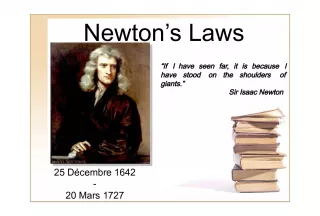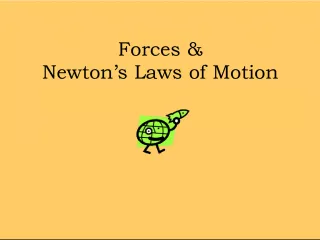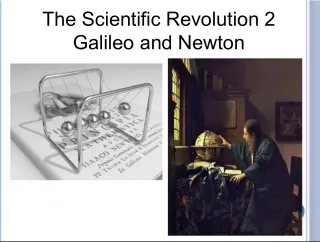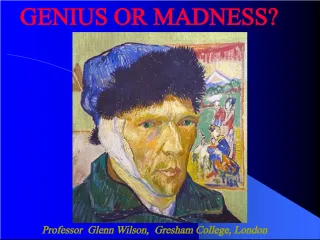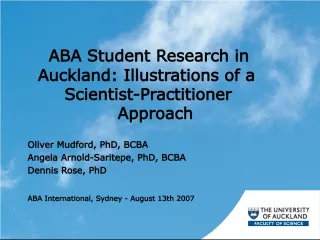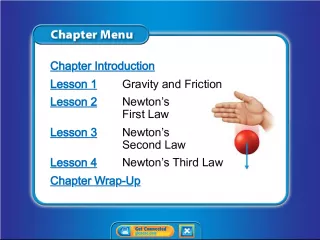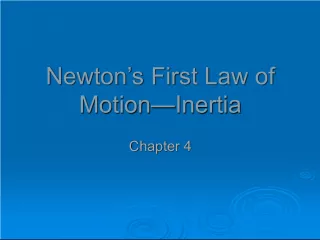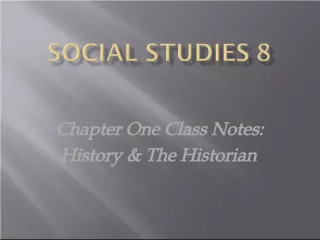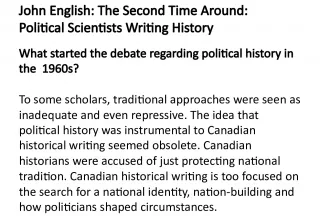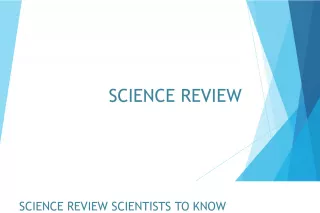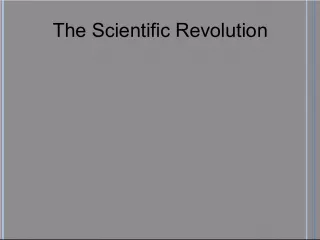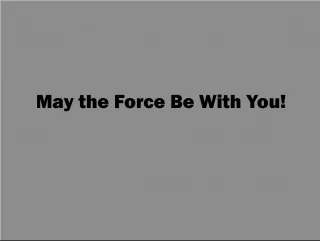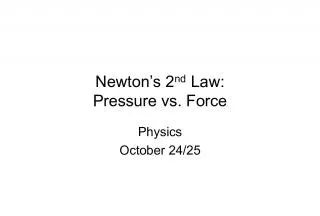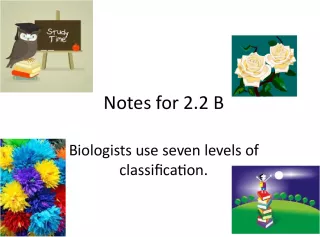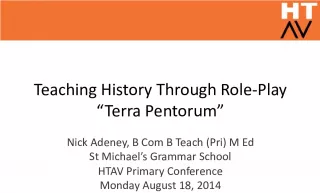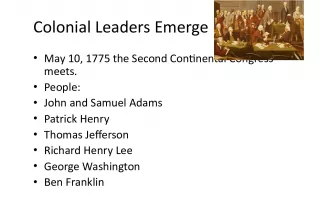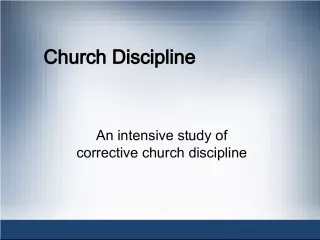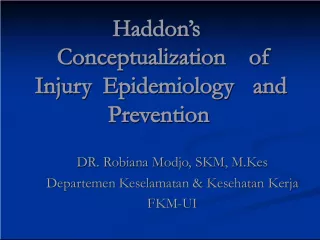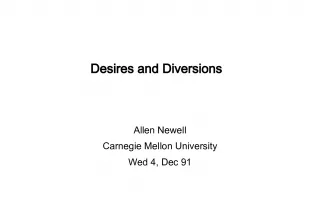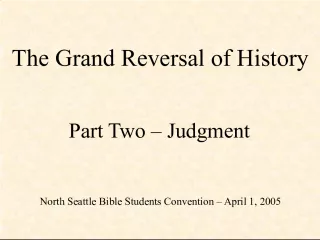Sir Isaac Newton - The Most Influential Scientist in History
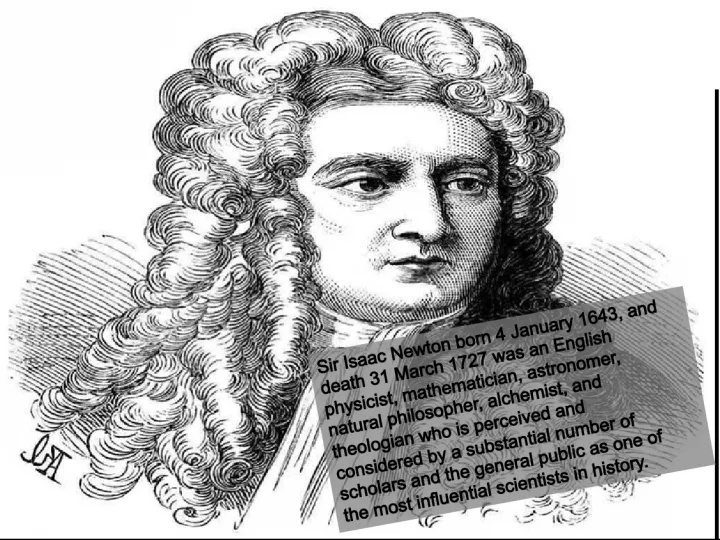

Sir Isaac Newton was a English physicist, mathematician, astronomer, natural philosopher, alchemist, and theologian. He is considered one of the most influential scientists in history and his contributions to science are undeniable.
- Uploaded on | 0 Views
-
 fernando
fernando
About Sir Isaac Newton - The Most Influential Scientist in History
PowerPoint presentation about 'Sir Isaac Newton - The Most Influential Scientist in History'. This presentation describes the topic on Sir Isaac Newton was a English physicist, mathematician, astronomer, natural philosopher, alchemist, and theologian. He is considered one of the most influential scientists in history and his contributions to science are undeniable.. The key topics included in this slideshow are Isaac Newton, physicist, mathematician, astronomer, alchemist, influential scientist,. Download this presentation absolutely free.
Presentation Transcript
1. Sir Isaac Newton born 4 January 1643, and death 31 March 1727 was an English physicist, mathematician, astronomer, natural philosopher, alchemist, and theologian who is perceived and considered by a substantial number of scholars and the general public as one of the most influential scientists in history.
2. Isaac Newton och gravitationen I do not know what I may appear to the world, but to myself I seem to have been only like a boy laying on the sea-shore, and diverting myself in now and then finding a smoother pebble or a prettier shell than ordinary, whilst the great ocean of truth lay all undiscovered before me
3. Kommentar (I)
4. Kommentar (II) ?
5. Kommentar (III)
6. Kommentar IV http://app.tu-dortmund.de/~julia/newton/
7. Isaac Newton och gravitationen Vgen till Principia 1.1. Den vetenskapliga revolutionen 1.3. Newtons tidiga liv 1.2. Vilken kraft styr planeterna? Utveckling av Principia 2.1. Samhllet i England 2.2. 1/r2-beteende 2.3. en universell kraft 2.4. Principia Efter Principia 3.1.Tester av Newtons teori 3.2. Opticks 3.3. Newton idag 1689 (Godfrey Kellner) 1702 (Godfrey Kellner) 1712
8. Isaac Newton och gravitationen Portrt Newton, 1689 (Godfrey Kellner)
9. Juliansk till Gregoriansk 46 f.Kr. - Juliansk kalender (Julius Caesar) 365,25 medelsoldygn i ett r 1582 Gregoriansk kalender infrd av pven Gregor XIII 365,2425 medelsoldygn i ett r 1753 gregoriansk kalender i Sverige Hr: alltid gregoriansk kalender, ven fr datum innan 1582
10. Den vetenskapliga revolutionen Utvecklingen av himliska och jordiska mekaniken p 1500- och 1600-talet
11. Ptolemaios (100-170 AD) Stjrnor som guddomlig makt, de bestmmer jordiska rrelser 7 planeter organiserad efter hastigheten mot fixsjrnhimlen mnen merkurius venus solen mars jupiter saturnus
12. Heaven, realm and dwelling place of God and of all the elect
13. Frn medellder till modern tid (I) Precisionsmekanik klockor [frsta klockor uppfanns redan p 1100-talet, men det handlade om tornklockor, som jobbade med mycket friktion och lite noggrannhet.] P 15-talet: vldigt exakta hjul med lite friktion (teknik frn guldsmedarna) Konstgjord tid frndrar samhllet, fr livet kan nu organiseras m.h.a. tiden
14. Frn medellder till modern tid (II) Uppfinning av teleskopet Galilei fick veta om teleskopets uppfinning i 1608 konstruerade eget teleskop, refraktor Litet synflt (bara 1/3 av mnen i synfltet) Frstorning ~ faktor 14
15. Kopernikus (1473 1543) Heliocentrisk vrldsbild: Inre planeterna : R = jordens rrelse r = planeternas rrelse Yttre planeterna : R = planeternas rrelse r = jordens rrelse Stjrnorna p ondlig avstnd Kopernikus Ptolemy
16. N. Copernicus, De Revolutionibus Orbium Coelestium (On the revolution of celestial spheres)
17. Ptolemaios - Aristarchus av Samos P e r f e k t c i r k u l r r r e l s e ( s y m m e t r i ) r u n t j o r d e n i c e n t r u m ( m n n i s k a n s t r i c e n t r u m a v G u d s s k a p e l s e ) I m o d e l l e n k a n r / R b e s t m m a s , m e n i n t e d e a b s o l u t a v r d e n a r o c h R m a r s v a r t v u n g e n a t t v a n d r a m e d r e n J o r d e n s n u r r a r r u n t e g e n a x e l ( j o r d e n s d a g l i g a r r e l s e ) . M e n : v a r f r f l y g e r i n t e a l l t i f r n d e n s n u r r a n d e j o r d e n d ( k a r u s e l l ) O m j o r d e n r r s i g r u n t s o l e n , v a r f r l m n a r d e n i n t e d e f l y g a n d e f g l a r n a b a k o m s i g ? O m m a n s k j u t e r u p p e n p i l r a k t i h i m l e n k o m m e r d e n a t t h a m n a p s a m m a s t l l e d r m a n s l p p t e d e n b o r d e l a n d a e n b i t i f r n p g a j o r d r r e l s e n P a r a l l a x e f f e k t ? S t j r n o r b o r d e n d r a d e r a s r e l a t i v a p o s i t i o n e r p h i m l e n
18. Parallax
19. Brahe (1546 1601) U r a n i e n b o r g : A s t r o n o m i s k o b s e r v a t o r i u m ( u t a n t e l e s k o p n ! ) p n H v e n u t a n f r k p e n h a m n 2 ' ( b g m i n u t e r ) n o g g r a n n h e t 2 0 r o b s e r v a t i o n e r , m e n i n g e n b r a i d o m t e o r i n b a k o m p l a n e t e r n a s r r e l s e t r o r p g e o c e n t r i s k v r l d s b i l d
20. Kepler (1571 1630) F r a n v n d a B r a h e s a n t e c k n i n g a r H i t t a r d e t f l j a n d e : K o p e r n i k u s m o d e l m a t c h a r i n t e B r a h e s a n t e c k n i n g a r 8 ' a v v i k e l s e ( 2 ' n o g g r a n n h e t ) U t g e n d e i f r n v i n k e l a v v i k e l s e n : m a r s o m l o p p s b a n a l i g g e r i n o m c i r k e l n f r a l l a t i d e r I d : a n v n d e l l i p s f r b t t r e b e s k r i v n i n g
21. Keplers lagar P l a n e t e r n a r r s i g p e l l i p t i s k b a n a m e d s o l e n i e n a b r n n p u n k t e n ( 1 6 0 9 ) S a m m a n b i n d n i n g s l i n j e n m e l l a n s o l e n o c h e n p l a n e t v e r f a r l i k a s t o r a y t o r p l i k a l n g a t i d e r ( 1 6 0 9 ) F r h l l a n d e t m e l l a n k u b e n p e n p l a n e t s m e d e l a v s t n d f r n s o l e n o c h k v a d r a t e n p d e s s o m l o p p s t i d r l i k a s t o r t f r a l l a p l a n e t e r Denna lag gr det mjligt att bestmma solsystemets dimension!
22. Solen Globen, Stockholm' Solsystemet Merkurius Slussen, Stockholm 25 cm, 2.9km avstnd frn Globen Venus, KTH, Stockholm 62 cm, 5.5km avstnd Jorden - Naturhist.museum, Stockholm 65 cm, 7.2km avstnd Mars Mjrby, Stockholm 35 cm, 11.6 avstnd Jupiter, Arlanda flygplats 7.3m, 40km avstnd Saturnus ska till ngstrmslaboratori et, Uppsala 6.1m 73km frn globen Uranus har vandaliserats :-( Ska byggas p nytt i Gvle trakten... 2.6m, 146 km avstnd Neptunus, Sderhamn, 2.5m, 229 km avstnd till globen Pluto, Delsbo, 12 cm, 300km avstnd frn globen
23. Galilei (1564 1642) vldigt vertygande retorik anvnder polemik fr att uppvisa hans fienders okunnighet Bygger eget teleskop i egen verkstad Upptcker Jupiters 4 strsta mnar venusfaserna skymt av saturnus ringar Dialogo anledning fr Inquisationsprocessen
24. Galilei - Discorsi Infinitisemal calculus Fritt fall (hastigheten kar linert med tiden) trghetslag rrelsemngdsmomentet r bevarad Energin r bevarad i gravitationsfltet (pendel: amplituden r samma i brjan och efter halva perioden)
25. Descartes (1596 - 1650) Anti-Aristotelsk vrldsbild Tvivla p allt Matematisk vrld allt kan frklaras m.h.a. matematiken Orsak verkan Inget vakuum, ndligt universum Ingen fjrrverkan , rrelse krver direkt kontakt Hela universum fyllt med materia Virvelteori planeterna rr sig i en eter, h lls p banor runt solen p.g.a. virvlar allmnt accepterad ~ mitten av 1600-talet
26. Den nya vrldsbilden och religion But thou hast ordered all things in measure and number and weight
27. Fore Newton Vakuum Natur Planeterna s rrelse Aristoteles Nej Logik p kristallsfr Galilei Ja Matematik utan std Descartes Nej (Virvelteori) Matematik, argumentativ eter (rrelse bara genom direkt kontakt) Newton ??? ??? ?
28. Gilbert (1544 1603) Universitetslrare p Gresham college Lran av en magnetisk jord frsk att frst kompassnlen Planeternas rrelse pga magnetisk kraft jorden som sfrisk magnet omgiven av en attraherande sfr
29. Wilkins (1614 1672) The discovery of a world in the moone (1638) Magnetisk jord, Gilberts lra 32 km ver marken mnniskan kan undkomma jordens magnetiska kraft
30. Wilkins losning till pil-problemet Suppose this earth were A, which was to move in the circle C, D. and let the bullet be supposed at B. within its proper verge; I say, whether this earth did stand stil or move swiftly towards D, yet the bullet would still keepe at the same distance by reason of that Magneticke vertue of the center (if I may so speake) whereby all things within its spheare are attracted with it . So that the violence to the bullet, being nothing else but that whereby 'tis removed from its center, therefore an equall violence can carry a body from its proper place, but at an equall distance whether or no the center stand still or move Discovery of a world in the Moone (1638),
31. Wilkins reflektion But to this I answere, that the argument will not hold of such bodies, whose superficies is full of unequall parts and gibbosities as the Moone is. Wherefore it is as well the more probable as the more common opinion, that her light proceedes from both these causes, from reflexion and illumination ; nor doth it herein differ from our earth, since that also hath some light by illumination: for how otherwise would the parts about us in a Sunne-shine day appeare so bright, when as all the rayes of reflexion cannot enter into our eye Discovery of a world in the Moone (1638),
32. Wilkins Discovery of a world in the Moone (1638) Proposition 1. - That the strangenesse of this opinion is no sufficient reason why it should be rejected, because other certaine truths have beene formerly esteemed ridiculous, and great absurdities entertayned by common consent. -- By way of Preface. Prop. 2. - That a plurality of worlds doth not contradict any principle of reason or faith. Prop. 3. - That the heavens doe not consist of any such pure matter which can priviledge them from the like change and corruption, as these inferiour bodies are liable unto. Prop. 4. - That the Moone is a solid, compacted opacous body. Prop. 5. - That the Moone hath not any light of her owne. Prop. 6. - That there is a world in the Moone, hath beene the direct opinion of many ancient, with some moderne Mathematicians, and may probably be deduced from the tenents of others. Prop. 7. - That those spots and brighter parts which by our sight may be distinguished in the Moone, doe shew the difference betwixt the Sea and Land in that other world. Prop. 8. - That the spots represent the Sea, and the brighter parts the Land. Prop. 9. - That there are high Mountaines, deepe vallies, and spacious plaines in the body of the Moone. Prop. 10. - That there is an Atmo-sphra, or an orbe of grosse vaporous aire, immediately encompassing the body of the Moone. Prop. 11. - That as their world is our Moone, so our world is their Moone. Prop. 12 - That tis probable there may bee such Meteors belonging to that world in the Moone, as there are with us. Prop. 13. - That tis probable there may be inhabitants in this other World, but of what kinde they are is uncertaine.
33. Wilkins (1614 1672) The discovery of a world in the moone (1638) m nen reflekterar ljus frn solen och skiner inte sjlv det finns dalar och bergar p mnen, vatten och land ndlig, tunn kraftsfr (magnetismen) 1640 : ologiskt att ha en ndlig, tunn kraftsfr kraft som avtar med radien
34. Wilkins (1940) It is probable, that this magneticall vigor dos remit of its degrees proportionally to its distance from Earth, which is the cause of it En kraft som avtar med avstndet frn jorden! Discovery of a world in the Moone (1638)
35. Wren (1632 1723) 1666 Aterbygger London efter stora branden Astronomiprofessor I Gresham (1657 1661) I Oxford (efter 1661)
36. Hooke (1635 1703) 1660 Hookes lag elasticitetslra deformationens storlek r proportionellt till den pverkande kraften 1662 Curator of Experiments i unga Royal Society 1662/1664 frsker utfra ett experiment som skulle visa att jordens dragningskraft varierar med hjden Mter kroppernas vikt p Westminster Abbey och p gamla St Paul's Cathedral upptcker ingen skillnad
37. Hooke och gravitationen 1666 pendel som delas upp i 2 strngar pendeln ( jorden & mnen ) svngar runt ett centrum ( solen ) 1674 Attempt to prove the motion of the Earth, med appendix: Three suppositions (tre frmodan) i permanent konflikt med Isaac Newton
38. Hookes (1635 1723), First supposition Frsta frmodan First, That all Coelestial Bodies whatsoever, have an attraction or gravitating power towards their own Centers , whereby they attract not only their own parts and keep them from flying from them, as we may observe the Earth to do, but that they do also attract all the other Coelestial Bodies that are within the sphere of their activity
39. Hookes (1635 1723), Second supposition andra frmodan The second supposition is this, That all bodies whatsoever that are put into a direct and simple motion, will so continue to move forward in a streight line, till they are by some other effectual powers deflected and bent into a Motion, describing a Circle, Ellipsis, or some other more compounded Curve Line
40. Dynamisk rorelse i en orbit
41. Hookes (1635 1723) third supposition tredje frmodan The third supposition is, That these attractive powers are so much the more powerful in operating, by how much the nearer the body wrought upon is to their own Centers.
42. Hooke om 1/r eller 1/r 2 Now what these several degrees are I have not yet experimentally verified... He that understands the nature of the Circular Pendulum and Circular Motion, will easily understand the whole ground of this Principle.
43. Sammanfattning Kepler himmelsmekanik Galilei fysikalisk beskrivning av jordiska mekaniken Problemet p a 1600-talet : forsok att forena jordiska fenomen med himmelsmekaniken vilken kraft driver planeterna (Gilbert, Wilkins et al.: magnetismen; Galilei et al.: gravitationen) hur andras kraften (avst nd, rorelse, ...) Hooke Korrekt beskrivning av dynamisk rorelse Kraften avtar med radien (hur exakt r oviktigt) Kraften r dock inte universell Men: hittills oknd av Newton
